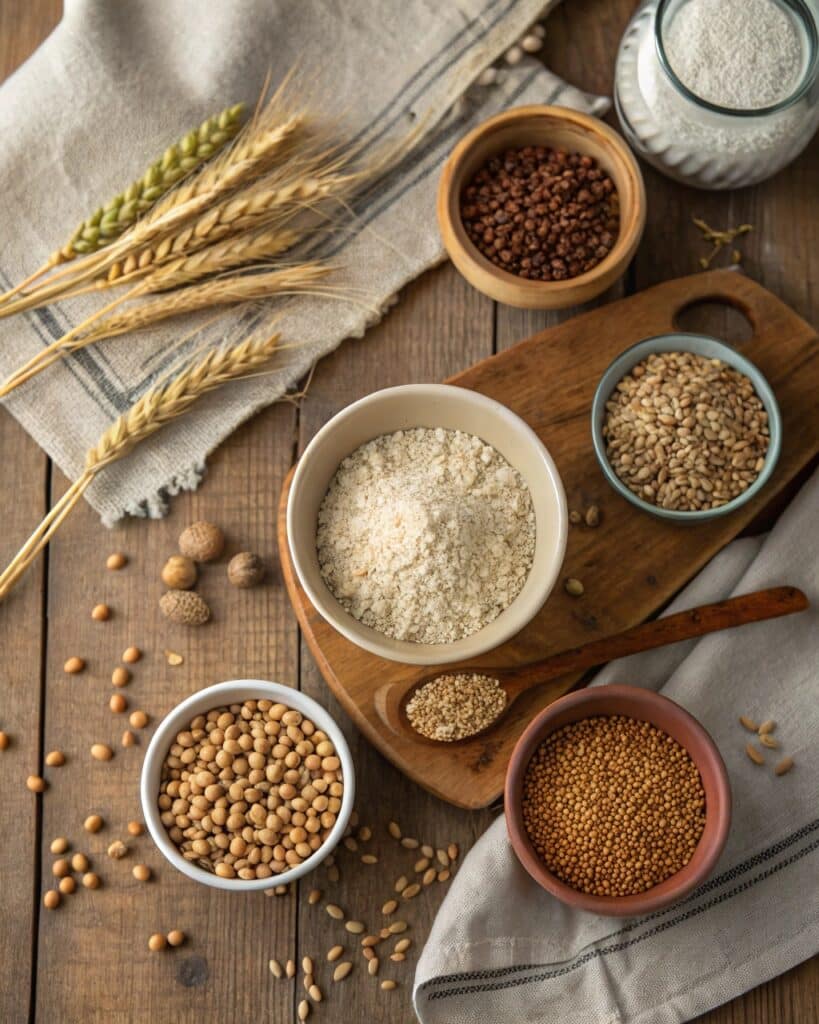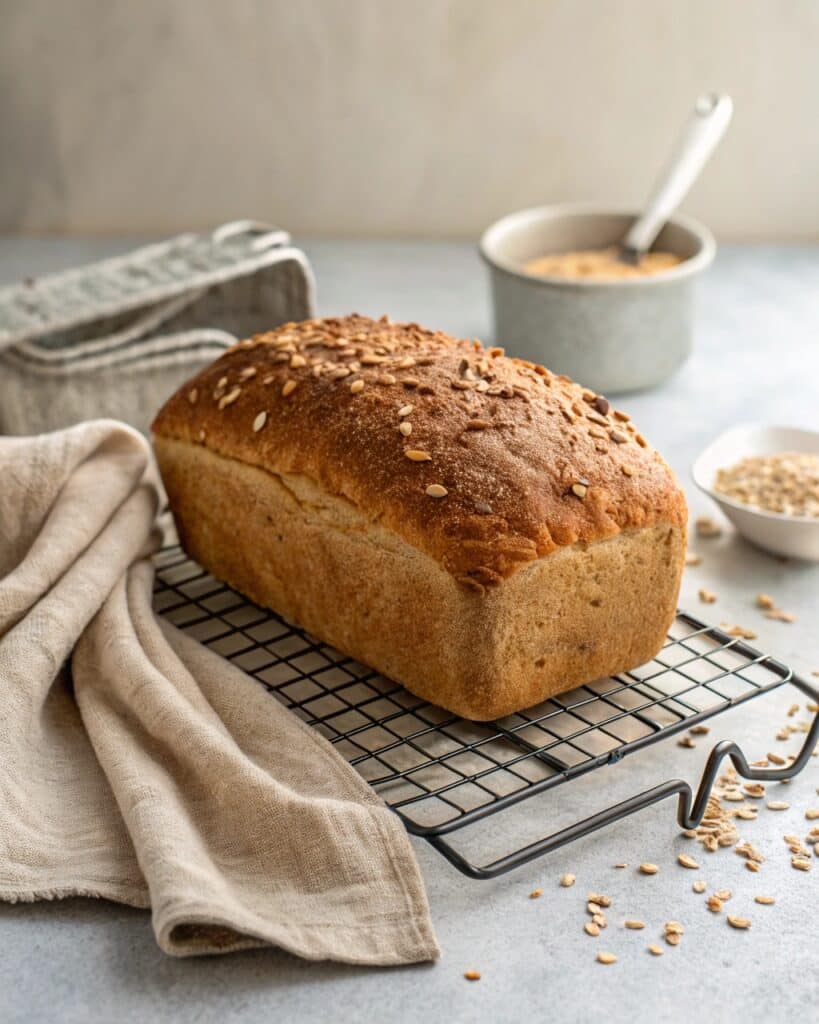If you’re looking for a hearty, wholesome way to nourish your body, this Ezekiel bread recipe is a tried-and-true classic with deep roots. Based on a Biblical passage and packed with fiber-rich grains and legumes, it’s more than just a loaf—it’s a tradition. In this article, I’ll walk you through my personal story behind baking this bread, show you how to make it step by step, answer popular questions, and help you discover creative ways to enjoy it. Whether you’re looking for an alternative to store-bought or inspired by the ingredients in scripture, this Ezekiel bread recipe has something special.
The Story Behind My Ezekiel Bread Recipe
Why I started baking Ezekiel bread at home
I remember the first time I heard about Ezekiel bread. It was during a weekend trip to a little retreat center near Boone, North Carolina—an old friend had brought a loaf she baked herself, and we tore pieces off by hand, sharing bites as we sipped herbal tea on the porch. It was dense, nutty, and unlike anything I’d tasted from a grocery store.
That bread stuck with me. A few weeks later, I dug into the origins of the recipe and found myself flipping through the Book of Ezekiel. Ezekiel 4:9, to be exact. It listed ingredients like wheat, barley, beans, and spelt—all sprouted and used to make a humble bread meant to nourish during hard times. That verse became my compass.
After that, my kitchen became a test lab. I soaked grains in mason jars overnight, experimented with lentils and millet, and baked loaves that were, frankly, bricks. But with time, I got it right. What came out of my oven was a hearty, nutrient-dense Ezekiel bread recipe that tasted like comfort and legacy.
Even now, I love how it brings my family to the table. My kids toast slices with almond butter before school, and I’ll sneak one beside a bowl of soup on quiet afternoons. It’s the kind of bread that feels like it’s doing your body some good.
It also pairs wonderfully with other rustic bakes like this Cranberry Walnut Bread or the classic Marble Rye Bread Recipe when I’m hosting guests who appreciate old-world flavors.
What makes Ezekiel bread unique
What sets this bread apart isn’t just the ingredients—it’s the method. Sprouting the grains before baking breaks down anti-nutrients, making vitamins and minerals more bioavailable. That means your body gets more nutrients. Unlike refined breads, the Ezekiel bread recipe uses no white flour, no preservatives, and no sugar.
It’s a full-on whole food experience. Sprouted grains like wheat berries and barley blend beautifully with lentils, beans, and millet to create a well-rounded loaf high in plant-based protein and fiber.
This makes Ezekiel bread a great addition to any mindful pantry, whether you’re looking to eat clean or following a faith-inspired path in your food choices. Some even compare its nourishment benefits to those found in balanced, naturally sweetened treats like these Greek Yogurt Brownies or Banana Muffins—satisfying yet nourishing.
How to Make Ezekiel Bread from Scratch
Ingredients and how to sprout grains at home

Making Ezekiel bread from scratch starts with understanding its foundational ingredients. This isn’t your average flour-based loaf. The Ezekiel bread recipe is built from a blend of whole grains and legumes, all of which are sprouted before baking to increase nutrition and digestibility.
Here’s a traditional list of what you’ll need:
- Wheat berries
- Spelt
- Barley
- Millet
- Lentils
- Great Northern beans
- Filtered water
- Sea salt
- Olive oil (optional for softness)
Sprouting the grains takes 2–3 days but is worth every minute. Here’s how to do it:
- Wash each grain and legume in a fine-mesh strainer until the water is clear.
- Soak each one in separate bowls of water for 8 to 12 hours.
- Drain and place each in a jar with a sprouting lid or mesh cloth.
- Rinse and drain twice daily until tails appear (about 1/4 inch long).
- When fully sprouted, pat dry and store in the fridge until ready to grind and mix.
Sprouting activates enzymes that help your body digest the grains better and increases the bioavailability of nutrients like iron, B vitamins, and magnesium. This process mirrors what’s used in the Healthy Chocolate Peanut Butter Pie—not the ingredients, of course, but the mindfulness of whole-food preparation.
For people who want to skip the sprouting, you can find pre-sprouted grains online or at health stores. Just make sure they’re unsweetened and organic.
Mixing and forming your Ezekiel bread dough

Once your grains and legumes are sprouted, it’s time to grind them. You’ll need a food processor or grain mill. The texture should be somewhere between coarse and paste—think of it like a thick, wet oatmeal. Don’t worry if it’s stickier than traditional dough; that’s normal for this recipe.
Here’s what to do:
- Mix all your sprouted ingredients together in a large bowl.
- Add a little sea salt and, if you like, a bit of olive oil.
- Stir thoroughly until it forms a shaggy, sticky dough.
- Pour into a greased loaf pan (or shape by hand on a lined sheet pan).
- Cover with a damp towel and let it rise slightly—about 1 hour in a warm kitchen.
It won’t rise like fluffy white bread, but that’s not the goal. Ezekiel bread is meant to be dense, hearty, and sliceable. Think of it more like a nourishing companion to your meal than a centerpiece itself.
After baking, the crust should feel firm, and the interior should be moist and packed with earthy aroma. It slices beautifully once cooled and keeps well in the fridge for up to 5 days.
Check out our popular Blueberry Cottage Cheese Breakfast Bake if you’re looking for another wholesome, high-protein meal idea.
Baking and Customizing Your Ezekiel Bread Recipe
Step-by-step baking instructions for perfect results
Now that your dough is ready, it’s time to bake this Ezekiel bread recipe to perfection. Baking it low and slow is key to ensuring the interior cooks through without drying out. Here’s how to do it:
- Preheat your oven to 325°F (165°C). Avoid higher temperatures—this bread doesn’t like to rush.
- Place your pan on the middle rack to allow even heat distribution.
- Bake for 50–60 minutes. The bread should be golden on top and sound hollow when tapped.
- Check for doneness using a thermometer—internal temp should hit around 190°F.
- Cool completely before slicing. Letting it rest on a wire rack for at least 2 hours prevents a gummy center.
You’ll notice the crumb is moist, firm, and earthy, making it ideal for slicing thin. This bread holds up beautifully to toasting, and you can store slices in the freezer with parchment between each piece.
Need a boost of variety? You can always pair the warm slices with something fun like Cheesecake Cookie Dough Tacos for dessert—just balance the richness with the fiber punch of this bread.
Flavor variations and adjustments for dietary needs
Ezekiel bread is naturally vegan and dairy-free, which makes it a favorite in plant-based kitchens. But if you’re experimenting, here are some adjustments and ideas that still respect the traditional format:
- Add seeds. Mix in sunflower, sesame, or flax seeds for added texture and omega-3s.
- Try herbs. Stir in dried rosemary, oregano, or thyme for a savory twist.
- Go gluten-free (sort of). Ezekiel bread contains wheat and barley, which aren’t gluten-free, but some folks adapt it using sprouted quinoa, buckwheat, and amaranth. Just note: it changes the texture.
For kids or picky eaters, adding a tablespoon of maple syrup or mashed sweet potato to the dough can mellow the bold, grainy flavor. I’ve done this for my youngest when she preferred softer bread alongside a piece of fruit or these Banana Muffins.
For folks with dietary restrictions, this bread is a useful base. It’s low in sugar, naturally rich in fiber, and high in plant-based protein thanks to the legume-grain combo.
You can easily bake a double batch and keep one loaf sliced in the freezer—this saves time during busy weeks when you’re trying to eat well without fuss.
How to Serve and Enjoy Ezekiel Bread Daily

Everyday serving ideas for Ezekiel bread
Once you’ve baked your Ezekiel bread, you’ll be surprised at how versatile it is. Whether toasted, grilled, or layered with spreads, this dense, nutrient-rich loaf adapts to just about any meal.
These are some of my favorite ways to eat it:
- Toast the bread and spread almond butter, mashed avocado, or cream cheese mixed with herbs on it.
- Use as sandwich bread for roasted veggie stacks or hummus and greens.
- Crumble it into savory breakfast bowls alongside sautéed kale and eggs.
- Cut it into cubes to make croutons for soups or salads.
Because it’s hearty and slightly chewy, Ezekiel bread holds up beautifully with toppings. When I’m hosting brunch, I’ll pair slices with sweet spreads and serve alongside treats like these Greek Yogurt Brownies or Cranberry Walnut Bread for a contrast in textures.
You can also toast and drizzle it with olive oil for a quick rustic starter or grill it on the stovetop for sandwich melts. Just remember to slice it thinner than standard loaves for the best bite.
Why this recipe remains a kitchen staple
This Ezekiel bread recipe isn’t just healthy—it’s deeply nourishing and rooted in tradition. It satisfies more than hunger.It gives you a connection to something old and meaningful. Knowing that every slice contains sprouted grains and legumes packed with fiber and plant-based protein makes it feel like you’re giving your body what it truly needs.
Even more, it’s flexible. You can enjoy it with your morning coffee or use it to support more indulgent meals without throwing off your balance. Whether you’re pairing it with Creamy Burrata Pasta or serving it beside a green smoothie, it simply fits.
I like to think of it as bread with a purpose. And it’s become a weekly bake in my home—part ritual, part nourishment, all goodness.
FAQs
What are the ingredients for Ezekiel bread?
Ezekiel bread includes sprouted wheat berries, spelt, barley, millet, lentils, and Great Northern beans. You’ll also use water, sea salt, and optionally olive oil for softness. These whole, sprouted foods are the foundation of the traditional Ezekiel bread recipe.
Is Ezekiel bread actually healthy?
Yes, it has a lot of fiber, plant-based protein, and important nutrients. Sprouting the grains breaks down anti-nutrients, making it easier to digest and absorb minerals. It’s a whole food bread without preservatives or added sugars.
Where in the Bible can I find the recipe for Ezekiel bread?
The recipe is inspired by Ezekiel 4:9, where God instructs the prophet Ezekiel to mix wheat, barley, beans, lentils, millet, and spelt to make bread. The modern version adapts these ingredients for health and flavor while honoring the original verse.
What do I do with Ezekiel bread?
You can toast it, use it for sandwiches, make croutons, or enjoy it with soups, salads, and spreads. It’s a versatile, hearty bread that fits into breakfast, lunch, or dinner.

Ezekiel Bread Recipe: A Homemade Staple Worth Baking
- Total Time: 73 hours
- Yield: 1 loaf 1x
- Diet: Vegan
Description
A traditional Ezekiel bread recipe made from sprouted grains and legumes, inspired by the Bible and packed with nutrients.
Ingredients
1 cup wheat berries
1 cup spelt
1/2 cup barley
1/4 cup millet
1/4 cup lentils
1/4 cup Great Northern beans
1/2 tsp sea salt
1 tbsp olive oil (optional)
Filtered water
Instructions
1. Sprout all grains and legumes separately (2–3 days).
2. Grind the sprouted mixture into a coarse paste.
3. Add salt and olive oil; mix well.
4. Pour into greased loaf pan or shape free-form.
5. Let rise covered for 1 hour.
6. Bake at 325°F for 50–60 minutes.
7. Cool completely before slicing.
Notes
Best stored in the fridge for 5 days or freezer for 3 months.
Slice thin for toasting or sandwiches.
Optional: Add seeds or herbs for flavor.
- Prep Time: 72 hours
- Cook Time: 1 hour
- Category: Bread
- Method: Baking
- Cuisine: Biblical
Nutrition
- Serving Size: 1 slice
- Calories: 90
- Sugar: 0g
- Sodium: 120mg
- Fat: 1g
- Saturated Fat: 0g
- Unsaturated Fat: 0.5g
- Trans Fat: 0g
- Carbohydrates: 18g
- Fiber: 3g
- Protein: 4g
- Cholesterol: 0mg

